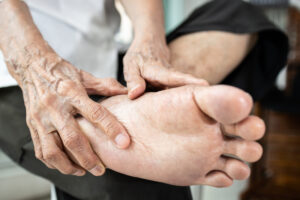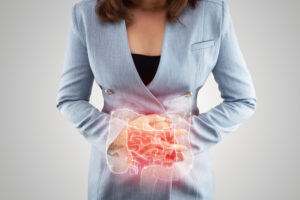There are more than just two types of joint deterioration. We mostly think of osteo or rheumatoid arthritis when people mention joint pain. But, unfortunately, there are more kinds.
Osteo arthritis is a disease generally of the weight-bearing joints, or as a result of recent or past injury. It generally comes on slower than Rheumatoid Arthritis and doesn’t have the other associated symptoms such as fatigue. The cartilaginous material erodes, often because of wear and tear, and may wear so thin that the “shock absorber” capability is gone. This may eventually necessitate a joint replacement. Symptoms associated with osteo-arthritis includes a deep achiness, joints that stiffen (especially upon arising in the morning or after resting) and make it difficult to perform general daily activities. The joint can be swollen, red or warm to touch. Range of motion may be limited and walking can be difficult, depending on the joint involved.
Rheumatoid Arthritis (or RA) is a diseased joint, that progresses into an auto-immune state. The inflammation and joint damage can get quite significant. You may get nodules on the joints. Symptoms can come on slowly or suddenly and are generally more severe than osteo-arthritis. They can involve any joint, generally several joints, with pain, swelling, morning stiffness, and is generally accompanied by fatigue. It is an auto-immune disease, frequently causing a cascade of other auto-immune disorders.
Gout is different than arthritis, in that uric acid crystals build up in the joint tissues. Most of the time it starts with the big toe, but not always, and can progress to other joints. Drugs, stress, poor diet or illness can trigger a gout “attack”. If left unaddressed, gout can cause progressive joint damage.
Wear and tear without good enough nutrients for adequate rebuilding of joint tissues can also result in joint deterioration. Certain foods and supplements can also trigger premature breakdown of joint tissue.
Lupus is an auto-immune disease. It can cause painful, swollen joints. It is also accompanied by symptoms of fatigue, headaches, swelling in any joint or limb, eyes or cheeks. In addition, Lupus symptoms can include sores in the mouth, sensitivity to sun, a characteristic “bat-wing” or “butterfly” shaped rash over the nose and cheeks, loss of hair, extreme coldness of fingers or “Reynaud’s phenomenon”. Lupus is usually associated with blood disorders and can include chest pain due to inflammation.
Psoriatic arthritis involves inflammation of the skin as well as the joints. Psoriasis of the skin starts first – the skin is red, raised, inflamed and with scales. Not everyone with psoriasis will get arthritis. People with psoriatic arthritis may also have pitting and/or discoloration of their nails, and swelling or inflammation may only involve one or just a few joints. As bad as these joint degeneration issues are, there is hope. There are options to help restore function.
©2019 Holly A. Carling, O.M.D., L.Ac., Ph.D.







